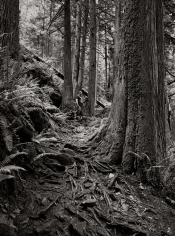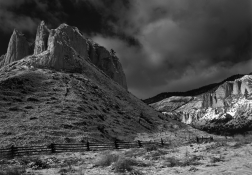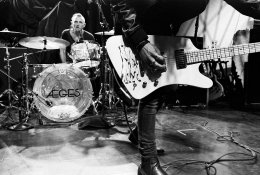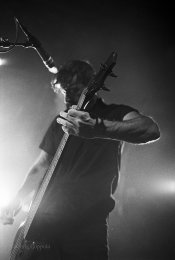Thank you Andrew, Matt and everyone, for an interesting thread. By the way, Andrew's photograph posted by Matt is superb. Beautiful light and wonderful execution!
Back to the thread: as Helge pointed, at least with HP5+ (and I've found exactly the same) EIs in the range 400-800, depending on developers, are tonally safe ways of using this film, while going to EI1600 suddenly implies a different situation, one where tonality and grain/resolving power suffer clearly, and, apart, one where high contrast scenes are not possible with clean shadows anymore.
I'd like to add just one more small detail after Andrew's and Matt's excellent exposure and development of the subject

:
Last month I decided to do a very simple test after seeing for years something I had not understood, explored or metered with precision.
Often, I have got a frame here and there that seemed (was) underexposed, even though I metered it (them) carefully with my handheld meter. After some thinking and years, I discovered it usually happened in a type of light that's not really low, but lowish, so as a pre-test I included -some months ago- a few frames in a couple of rolls I had in two cameras, one for common outdoors light, and another one for EI1600 low light pushing, both loaded with HP5+. I don't push high contrast events, by the way, only soft low light.
I used first, for that pre-test, a home scene (yard, all zones objects, gray card, white) that goes from good light to low light through the afternoon. I did those two exposures in lowish light. The interesting fact is, while the pushed roll scene was well exposed, the same scene in the good light roll was underexposed: surprising.
Then I did it a second time (the real test) and it happened exactly the same way.
After starting to understand, I remembered another case I have seen: very few times, a scene from a pushed roll came out too dense, and I had never understood why.
Here's what happens:
When I did the (second) test, first I exposed the scene when there was good light: at EI400 f/8 1/125, and then for the next shots I waited for the moments of the day when the right exposure was 1/60 f/8, 1/60 f/5.6, 1/60 f/4, 1/60 f/2.8, 1/60 f/2 and 1/60 f/1.4.
Density was the same in the first frames and up to f/2.8, while it was a bit lower at f/2, and even lower, a whole stop, at f/1.4. That, in the outdoors camera.
In the 1600 push camera, most frames were too dense, except the ones with wider f-stops...
Conclusion:
It seems to me, film is made for a certain range of photons. Below that, it starts to react differently, and that's why 2 or 3 stops below common overcast light things are fine yet, but below that, we get some underexposure.
On the other hand, when I calibrate for a 1600 push, I use low light for that, not good outdoors light, so, if I include in my 1600 push roll a scene with light that's not low, it becomes denser than the correct frames done in low light.
Then I tried to find if someone had talked about it: I found an old comment by the late Roger Hicks in which he said for low light he used to give frames more exposure, and he called that the fudge factor.
So I memorized, at 400, for normal development, 1/60 f/2.8 is OK, but f/2 requires opening half a stop, and f/1.4 one stop.
And if I ever need to include a good outdoors overcast light scene in a 1600 push roll again, I'll give it a stop less light.
Hope this helps.
Happy weekend everyone.
 If I could afford one, I'd buy one. I should have bought one ten years ago when they were going for cheap... oh well. My Rolleiflex will do for now.
If I could afford one, I'd buy one. I should have bought one ten years ago when they were going for cheap... oh well. My Rolleiflex will do for now.











